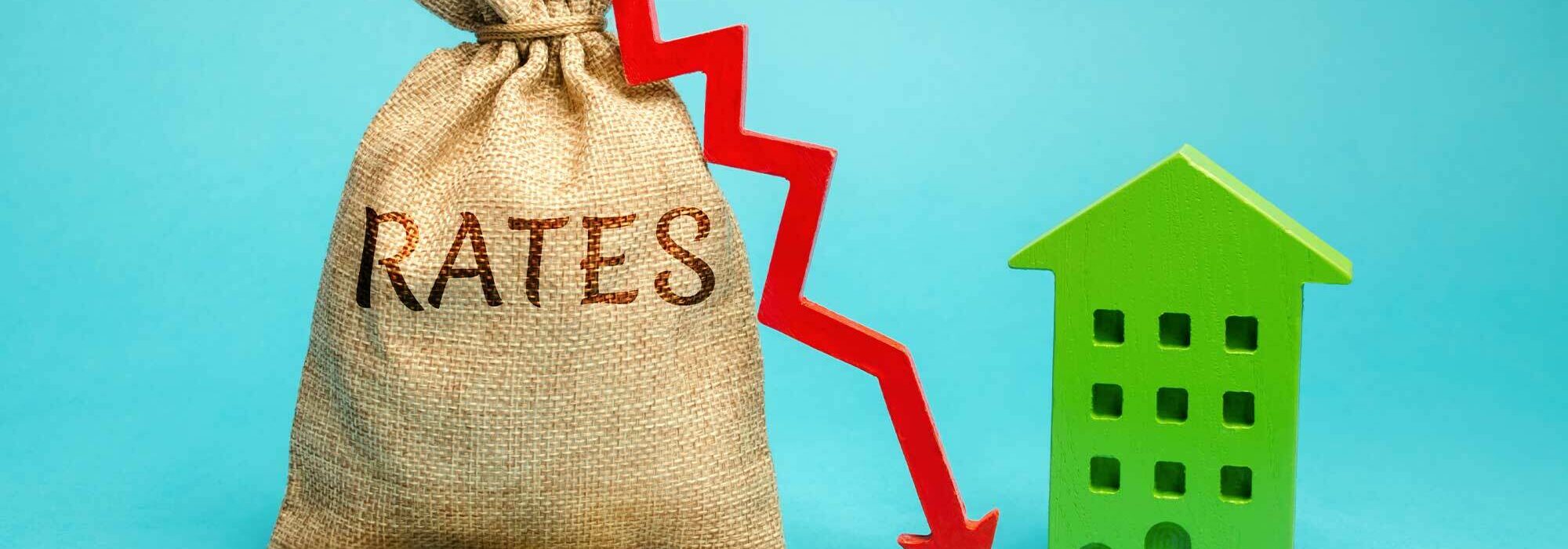Article Excerpt
Mortgage interest rates are going up after hitting historic lows, but they’re still near their lowest point in at least 50 years. Learn more about why.
In March 2022, the Federal Reserve, also known as the “Fed,” announced that it was raising the federal funds rate for the first time since late 2018. This is likely to be only the first of several rate hikes throughout 2022. An increase in mortgage interest rates is likely to follow as a result of the Fed’s action.
Mortgage interest rates have already been increasing in recent months for a variety of reasons, including the gradual economic recovery after two years of COVID-19 pandemic restrictions. Despite these recent increases, mortgage interest rates are close to the lowest they have been in the 50 years that Freddie Mac has kept track of 30-year fixed-rate mortgages. The average monthly commitment rate hit its highest point in 1981, and its lowest point in 2021.
![Picture by DonkeyHotey from Flickr [Creative Commons] Federal reserve](/images/articles/_generalPhotoStandard/federalreserve.jpg)
Picture by DonkeyHotey from Flickr [Creative Commons]
Mortgages: The Early Years
The concept of the mortgage, as we know it today, is less than a century old. Something resembling modern mortgages began to appear in the mid to late 19th century. Since they were largely unregulated, few records ever existed to show nationwide trends. Today’s mortgage system took shape after Congress passed laws regulating banks and other lenders in the 1930s.
Fannie Mae, created in 1938, makes much of the mortgage market possible by buying loans from banks to sell in a secondary mortgage market. This gives banks additional liquidity to make more loans. Freddie Mac is a similar entity that came into being in 1970. It began tracking mortgage interest rates soon afterward.
Mortgage Rates Were Much Higher In The 1970s And ‘80s
Freddie Mac’s first record of monthly average commitment rates for 30-year fixed mortgages is from April 1971. The rate was 7.31% that month, and it would continue to rise for more than a decade.
”The Great Inflation”
The country was in a prolonged period of inflation in 1971. The Fed describes this period as The Great Inflation. It began around 1965 and continued until approximately 1982. Credit, along with most consumer goods, grew increasingly expensive during this time.
The annual average mortgage rate for 1974, according to Freddie Mac, was 9.19%. The mortgage rate dropped below 9% for a few years, but then it broke 10% for the first time in November 1978. That was only the beginning.
![Photo by Warren K. Leffler from Wikimedia Commons [Public domain] Vintage cars](/images/articles/_generalPhotoStandard/Vintage-cars.jpg)
Photo by Warren K. Leffler from Wikimedia Commons [Public domain]
The Fed Steps In
By the late 1970s, Paul Volcker, the Chairman of the Fed at the time, was determined to use the Fed’s power to stabilize prices. The Federal Open Market Committee (FOMC), which sets the federal funds rate, adopted several policies at a meeting in October 1979 that led to sharp increases in the rate. While this might have helped with the cost of many goods and services, it led to further increases in mortgage interest rates.
The federal funds rate was 10% at the beginning of 1979, and it had almost doubled by mid-1981 to 19%. To offer a bit of perspective, the FOMC’s rate hike in March 2022 increased the federal funds rate from 0.25% to 0.5%.
1979 began with the monthly average mortgage commitment rate at 10.39%. By the end of the year, it would be 12.9%. The rate hit a peak of 17.82% in November 1981, before beginning a long, slow decline through the rest of the decade.
Rates Declined Through The 1990s
The United States experienced its longest economic boom to date during the 1990s. The economy grew every quarter from 1993 until the third quarter of 2001. For most of that time, productivity, wages, investment, and consumption were all growing. The massive growth of the technology industry was probably responsible for a large part of that trend.
Economic growth brought a reduction in inflation and a decrease in interest rates. The monthly average commitment rate exceeded 10% for the last time in November 1990. It ended the decade at 7.91% in December 1999, or at 7.38% in December 2000, depending on how you measure decades.
Rates Hit Historic Lows In The 2000s
The first decade of the 21st century saw several events that had profound effects on the economy in general. The dot-com crash of 2000 helped trigger a recession, but it does not seem to have had much of an impact on mortgage interest rates. Rates remained in the 6-7% range for a few more years.
The housing crash of 2007-08 had much more of an impact on rates. The average monthly commitment rate dropped below 6% several times from 2003 to 2005. It remained above 6%, but below 7%, in 2006 and 2007. The Fed cut the federal funds rate in order to reduce the cost of borrowing money in 2008, after which mortgage rates began a fairly steady decline.
The rate was last above 5% in January 2010. It dipped below 4% at various times between 2015 and 2019. During this time, the country was in what is now its longest period of economic expansion. When the COVID-19 pandemic hit the country in February 2020, it ended almost 11 years of growth. Mortgage rates dropped below 3% in August of that year. They have only recently begun to creep back above 4%.
![Photo by StefanPohl from Wikimedia Commons [Creative Commons] Chart](/images/articles/_generalPhotoStandard/chart_2022-04-21-210212_dfan.jpg)
Photo by StefanPohl from Wikimedia Commons [Creative Commons]
2022: A Great Time To Buy
Texas is a lucrative place to own a home, and now is a great time to buy. Mortgage interest rates will always be in flux. When we examine a wider-angle view of rates in decades past, 2022 confidently appears to be a good time to purchase a home.
We can answer your questions and guide you through every step of the home mortgage process. Get started on your free approval with an easy questionnaire!



